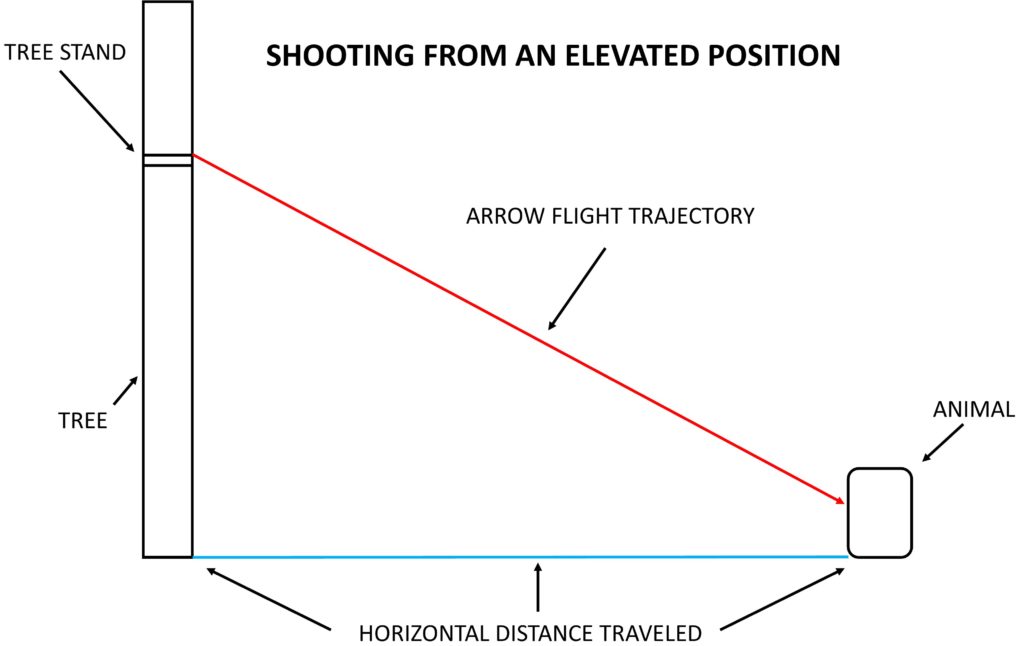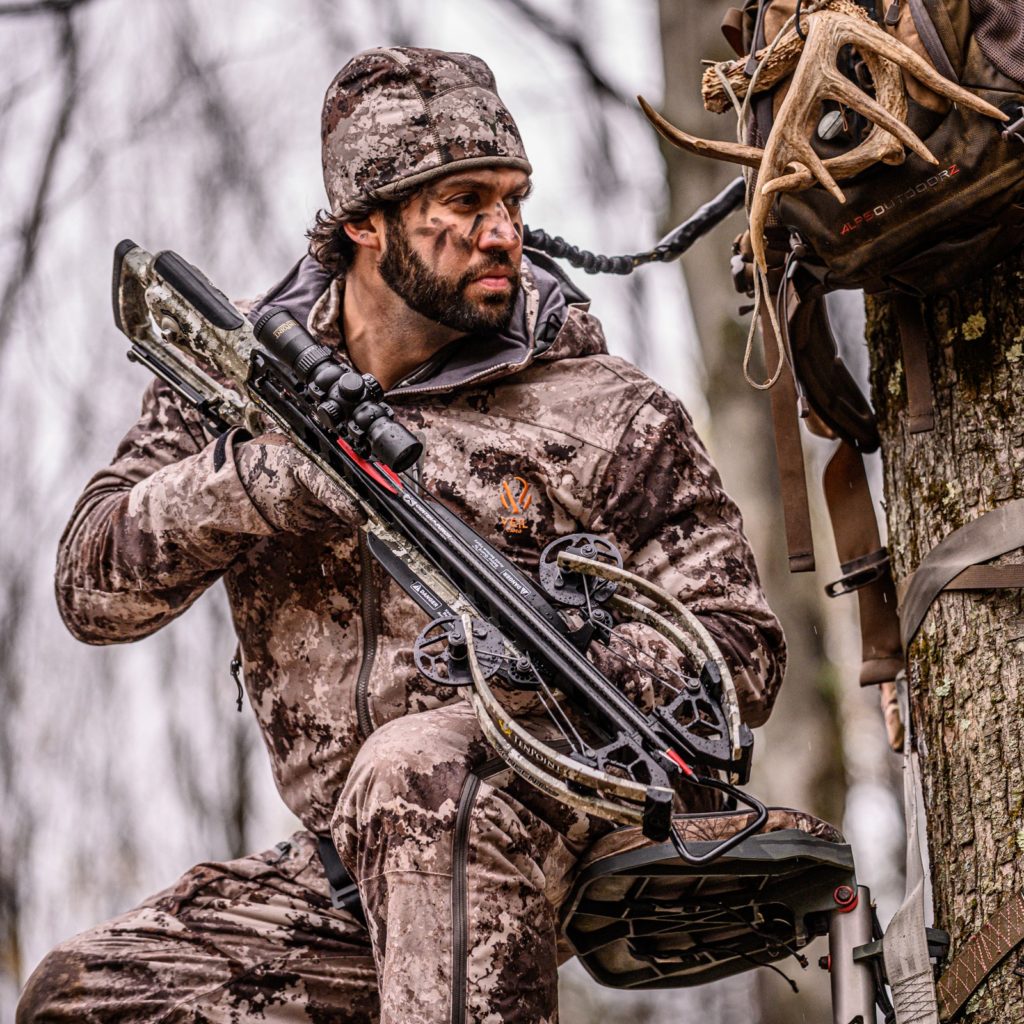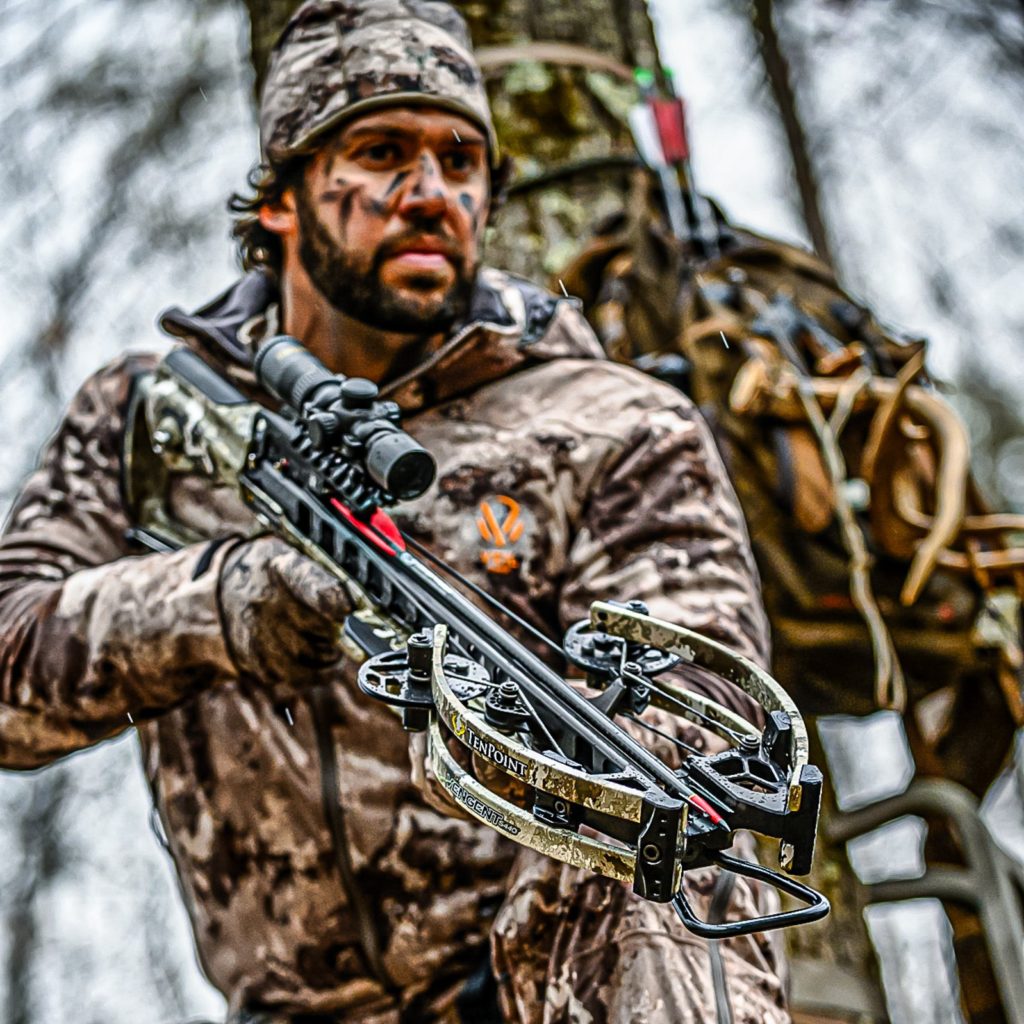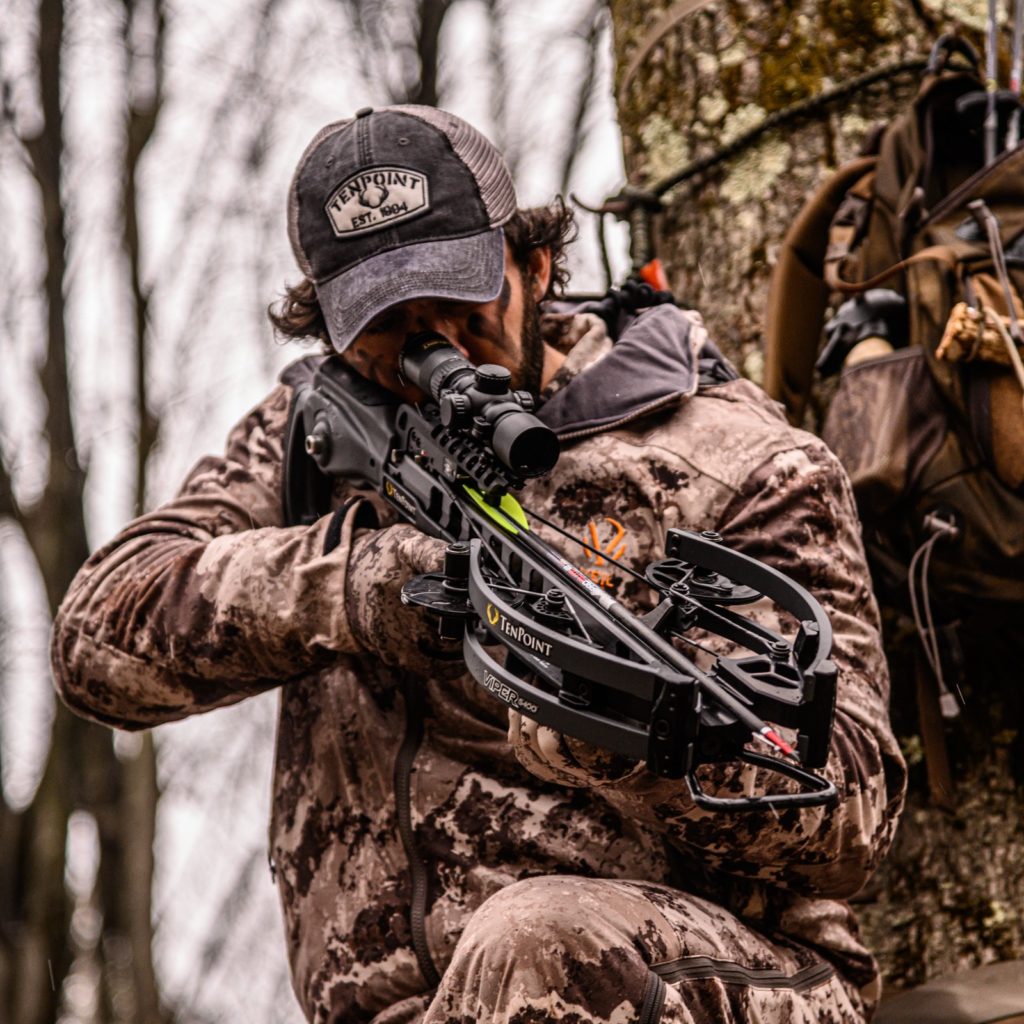Have You Practiced Shooting Angles with Your Hunting Crossbow?
Brian Flaherty / August 10th, 2021Does this routine sound familiar? Just prior to archery season, you take your hunting crossbow out of storage and begin to prep it for use. You take the crossbow out to your backyard or your archery club to test fire your hunting arrows with field points and broadheads to determine if the scope needs to be re-zeroed since you last used the crossbow during the previous season. You shoot it several times from a stable rest on flat ground, and you make the necessary adjustments to be sure it will hit dead-on at the distances indicated by the multiple horizontal lines or dots in the scope. Then, archery season starts, and you climb up into your tree stand or elevated blind and begin crossbow hunting.
Do you notice anything inconsistent with how you sighted-in and practiced with your crossbow as opposed to how you will hunt with it? Most folks use a stable rest on level ground when they are sighting in and practicing, but they do not spend much time taking shots from the same position or elevation at which they will be hunting. But, the arrow’s point of impact should remain the same whether you are shooting on flat ground or from an elevated position, right? Unfortunately, this is a common assumption that many crossbow hunters make, and this assumption is WRONG.
Shooting uphill, downhill, or at a downward angle from a tree stand causes the arrow’s point of impact to be HIGHER, in nearly all cases, than if you had taken the shot from the same distance on level ground. To best prepare yourself for the many shooting scenarios that you may face during the upcoming crossbow hunting season, you should include taking practice shots that will most closely mimic the elevation or angle at which you will be shooting from your hunting set-up.
First, let’s discuss why your point of impact is always higher if you shoot at an upward or downward angle as opposed to launching a crossbow arrow horizontally. When you shoot your hunting crossbow on level ground, gravity begins to pull the arrow downward as soon as the arrow leaves the flight rail and until it hits the target. The reason that you have multiple lines or dots in your scope is to compensate for this drop in arrow flight caused by gravity. In this scenario, the distance that the arrow travels to the target is the same as the horizontal distance from your rest to the target itself.
But what happens when you shoot at a downward or upward angle, like out of a tree stand for instance? When you take a shot from your stand at an animal on the ground, you are shooting at a downward angle, which means that the arrow’s flight trajectory moves both horizontally and vertically at the same time. In other words, the crossbow arrow is traveling to the animal in a horizontal direction while it is simultaneously traveling downward in a vertical direction. When shooting at a downward or upward angle, the distance the arrow travels will always be LONGER than the horizontal distance from your tree to the animal on the ground. Since gravity acts upon the crossbow arrow over the shorter distance, the arrow will not drop as much as you might expect, and your point of impact will be higher than your aiming point.






